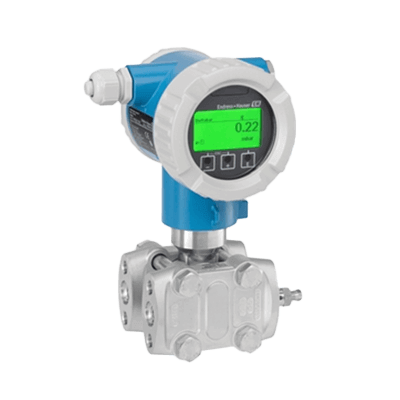What Is a Transmitter?

A transmitter is a device that transmits information measured by a sensor or other device to a different machine. It typically conveys pressure-related data like pressure, differential pressure, and pressure fluctuation. Transmission methods include pneumatic signals (using air pressure), electrical signals (using electrical signals and transmission lines), and optical signals (using optical fiber cables).
Uses of Transmitters
Transmitters are used in various facilities like plants, water treatment plants, and wastewater treatment plants. They are connected to pipes and ducts to measure and transmit fluid-related data such as pressure, liquid level, flow rate, and temperature to external devices. Selection criteria for transmitters include measurement range, accuracy, and transmission method. Some models also function as switches or controllers for other devices.
Principle of Transmitter
A transmitter consists of a sensor section for measurement, a processing section for signal conversion, and a transmission section for signal dissemination. It processes data such as pressure, flow rate, and temperature from sensors such as diaphragms, thermopiles, and transducers, converting it into electrical signals for transmission.
1. Processing Section
This section converts sensor data into electrical signals. Some Transmitters have built-in processors that generate control signals based on sensor data and send them to the transmission section.
2. Transmission Section
Here, information is transmitted via air pressure, electrical, or optical signals. Pneumatic signals are low-noise but slower, while electric or optical signals offer high-speed transmission but may be susceptible to noise in vibrating environments.
Types of Transmitters
Transmitters are classified based on their transmission methods:
1. Electrical Signal Type
This type transmits signals as electric current or voltage. It’s fast and suitable for long-distance transmission and easily integrates with control equipment or recorders.
2. Pneumatic Signal Type
Pneumatic signals use compressed air pressure for transmission. They are explosion-proof and resistant to electromagnetic noise but are not ideal for long distances and require clean, dry air.
3. Optical Signal Format
Optical signals use light flashes, usually transmitted through semiconductor lasers and optical fibers. Digital data is converted into optical blinks and sent through fibers, then converted back into electrical signals at the receiver. This format is ideal for long-distance, high-speed transmission in large plant instrumentation.